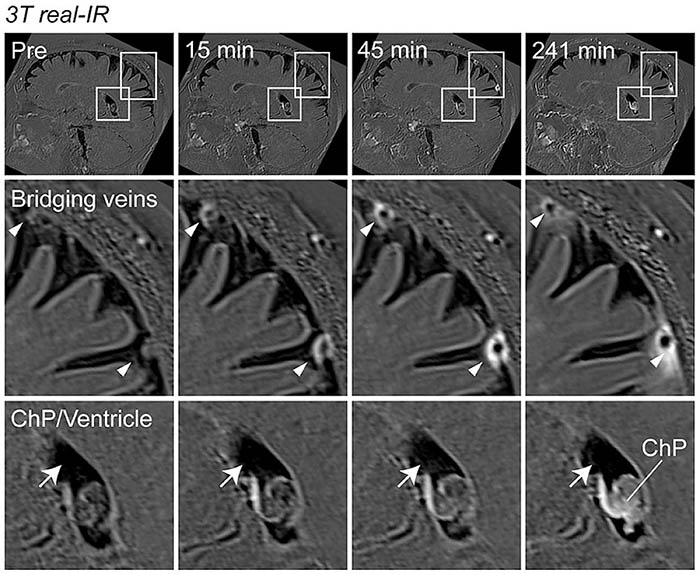New direct links discovered between the brain and its surrounding environment
NIH collaboration has implications for neural-immune system responses and aging
In a recent study of the brain’s waste drainage system, researchers from Washington University in St. Louis, collaborating with investigators at the National Institute of Neurological Disorders and Stroke (NINDS), a part of the National Institute of Health (NIH), discovered a direct connection between the brain and its tough protective covering, the dura mater. These links may allow waste fluid to leave the brain while also exposing the brain to immune cells and other signals coming from the dura. This challenges the conventional wisdom which has suggested that the brain is cut off from its surroundings by a series of protective barriers, keeping it safe from dangerous chemicals and toxins lurking in the environment.
“Waste fluid moves from the brain into the body much like how sewage leaves our homes,” said NINDS’s Daniel S. Reich, M.D., Ph.D. “In this study, we asked the question of what happens once the ‘drain pipes’ leave the ‘house’ — in this case, the brain — and connect up with the city sewer system within the body.” Reich’s group worked jointly with the lab of Jonathan Kipnis, Ph.D., a professor at Washington University in St. Louis.
Reich’s lab used high-resolution magnetic resonance imaging (MRI) to observe the connection between the brain and body’s lymphatic systems in humans. Meanwhile Kipnis’s group was independently using live-cell and other microscopic brain imaging techniques to study these systems in mice.

Fluid containing light-emitting molecules was seen to slip through the arachnoid barrier where blood vessels passed through.
This page was last updated on Wednesday, February 7, 2024